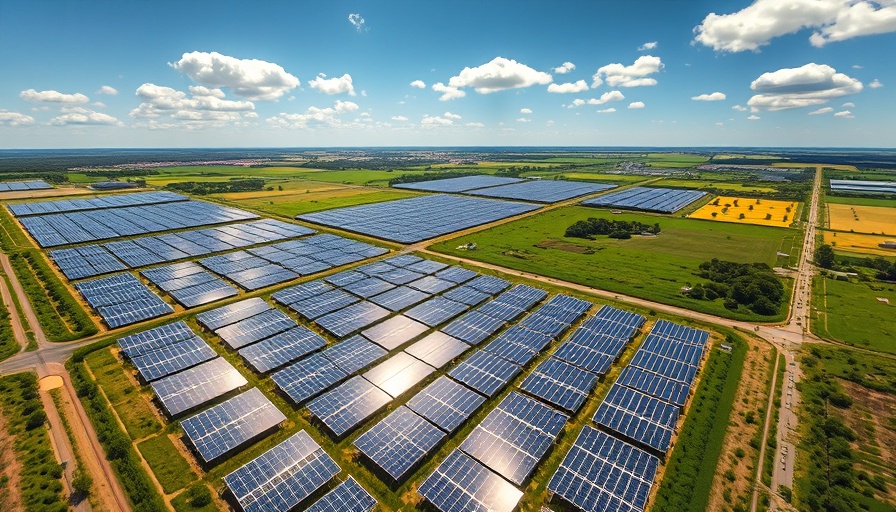
Australia's Renewable Energy Milestone: A Historical Context
In the first quarter of 2025, Australia's main power grid experienced a groundbreaking moment as renewables, specifically solar and wind energy, generated 43% of the electricity used across the eastern states. This marked the highest first-quarter share in the 25-year history of the National Energy Market, as reported by the Australian Energy Market Operator (AEMO). Such a shift reflects not only advancements in technology but also Australia’s growing commitment to transitioning from fossil fuels to cleaner energy sources.
A Deep Dive into Energy Trends: What’s Driving the Change?
The increase in renewable energy generation is not just a statistic; it signifies a larger trend toward sustainability. The rise of grid-scale solar generation by 10% from last year, and a remarkable 86% increase in battery generation, highlights the accelerating innovation within the sector. As Greg Bourne, a climate councillor, noted, the decline in coal usage points toward a cleaner, more reliable electricity market. The considerable ramp-up in renewable energy capacity emphasizes the necessity of moving towards sustainable solutions as climate concerns intensify.
The Economic Implications of Transitioning to Renewables
As renewables contribute more to the national grid, the economic implications are profound. Analyst Johanna Bowyer pointed out that rising contributions of renewable resources led to negative wholesale electricity prices for a staggering 18% of the time in midday when solar energy peaked. This situation allows consumers to benefit from lower electricity costs, fueling a cycle that encourages even more investments in renewable energy. As communities adopt rooftop solar systems—now prevalent in over four million Australian homes—the influence of renewables on market dynamics remains significant.
Climate Impact: The Environmental Benefits of Renewables
The transition to renewables also results in notable environmental benefits. The first quarter of 2025 recorded the lowest climate pollution level from the electricity sector in Australia, with a reduction in carbon emissions contributing to a safer planet for future generations. Bourne expressed optimism, stating that renewables are not just meeting the increasing power demands but also doing so with minimal environmental impact—a crucial aspect as Australia grapples with the ongoing climate crisis.
Future Trends: What Lies Ahead for Australian Energy?
Looking forward, the recent slowdown in large-scale renewable projects may be reversing, which is essential for the newly-elected Albanese government’s ambitious goal of achieving 82% renewable energy by 2030. To maintain momentum, experts believe it is crucial for Australia to enhance investments in various sectors, including large-scale batteries and solar farms. This investment will not only sustain Australia’s impressive energy transition but will also reinforce its status as a leader in the global renewable energy movement.
In conclusion, Australia’s progress towards a sustainable energy future is an encouraging sign in the fight against climate change. As renewable energy challenges traditional models and reshapes the market, citizens are encouraged to support these initiatives that promise a cleaner, more eco-friendly tomorrow.
 Add Row
Add Row  Add
Add 



 Add Row
Add Row  Add
Add 

Write A Comment